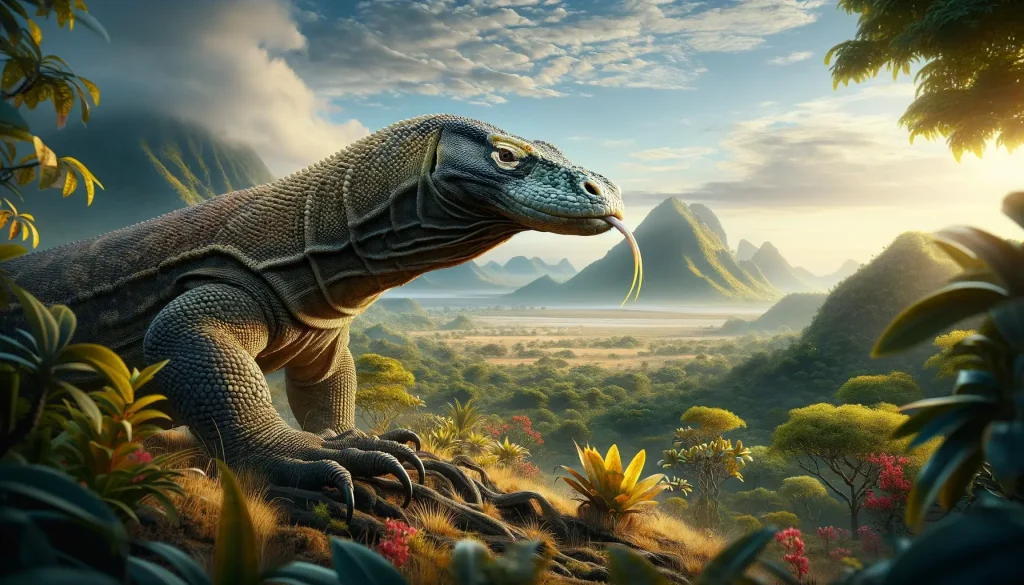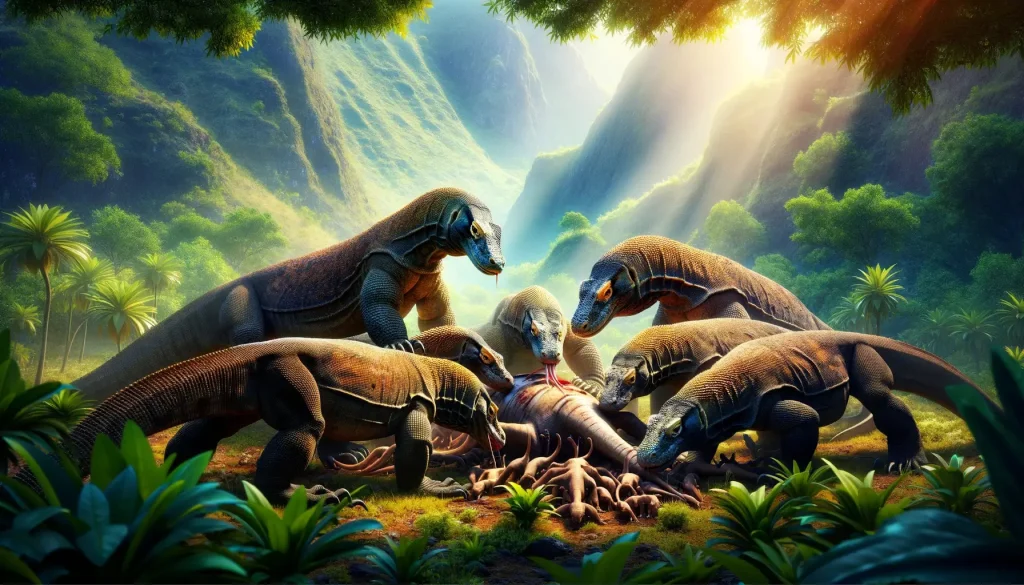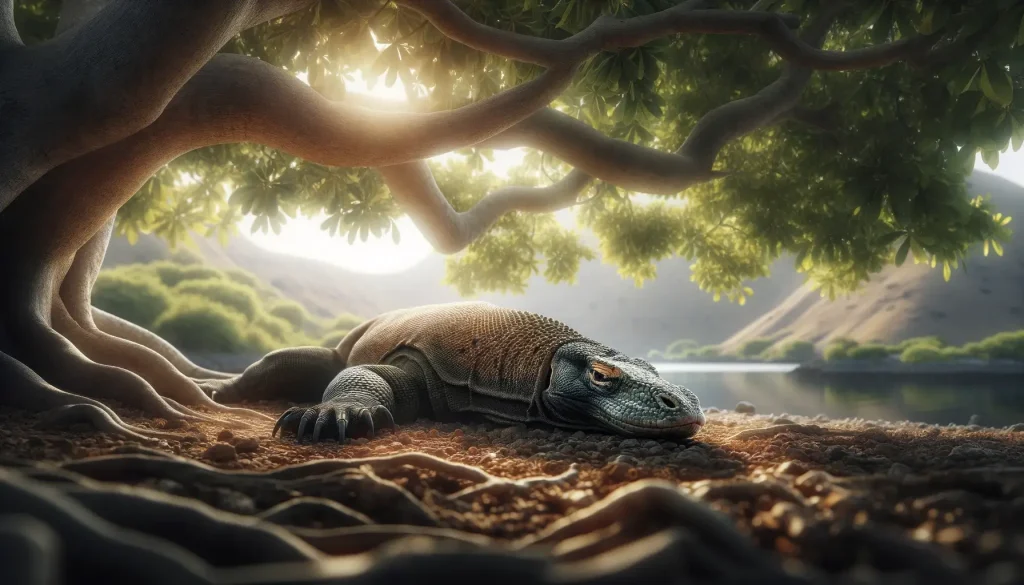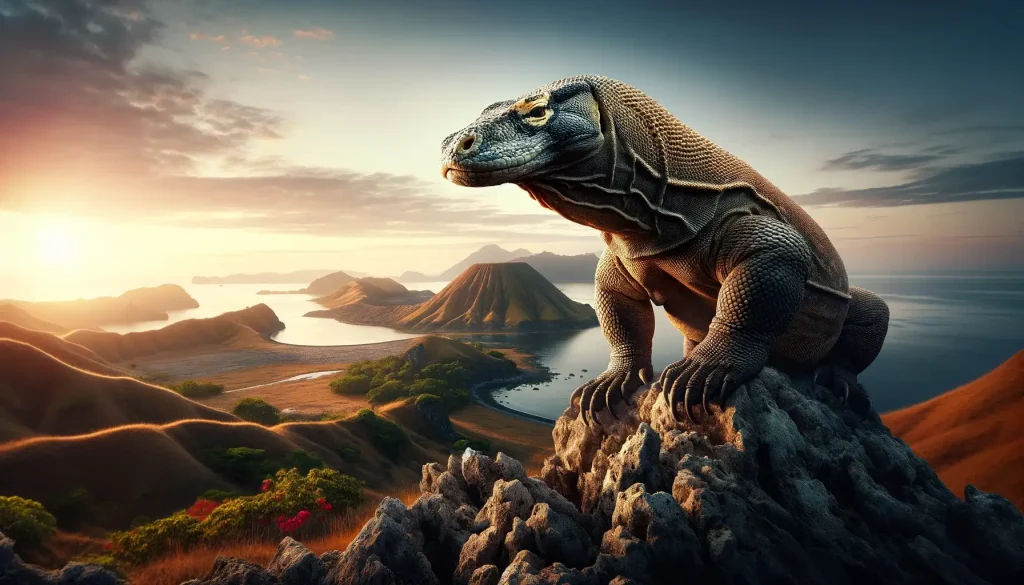
Separating Facts from Fiction in Komodo Dragon Ownership
When it comes to the allure of owning exotic pets, the Komodo dragon often surfaces in conversations shrouded in myth and misunderstanding. Due to their exotic nature and formidable appearance, numerous myths persist about the feasibility and glamour of keeping these massive reptiles as pets. It’s crucial to debunk these myths and present the realities of Komodo dragon ownership, emphasizing why these creatures are best appreciated in the wild or in professional care settings.
Firstly, the myth of domestication needs addressing. Komodo dragons are wild animals with specific behavioral, dietary, and environmental needs that cannot be adequately met in a typical household. They are not domesticated and possess natural instincts that can pose significant dangers to humans and other animals.
Another common myth is that Komodo dragons can adapt to life outside their natural habitat without consequence. In reality, these lizards require specific conditions to thrive, including a particular climate, space to roam, and a diet that is difficult to replicate in captivity. The complexity of their needs often leads to stress, health issues, and a diminished quality of life when kept as pets.
The misconception that owning a Komodo dragon is a testament to status or bravery overlooks the ethical considerations and conservation implications. Keeping these endangered creatures as pets can contribute to their decline in the wild, as it often supports illegal wildlife trade and undermines conservation efforts.
Furthermore, the idea that Komodo dragons can be easily obtained and cared for is far from the truth. Legal restrictions, the need for specialized care, and the significant costs associated with their upkeep make Komodo dragon ownership impractical and unethical for the vast majority of people.

What You Need To Know About Komodo Dragons
Komodo dragons (Varanus komodoensis) are a sight to behold. As the world’s largest and heaviest lizards, they possess several unique features that make them stand out in the reptile world.
Physical Traits of Komodo Dragons
These giant lizards boast long tails, powerful necks, and sturdy limbs. Their yellow, forked tongues are iconic, enhancing their ability to sample the air for the scent of prey. Komodo dragons display a stone-colored scale pattern as adults, which helps them blend into their environment, while juveniles exhibit more vibrant patterns. Their ability to consume large amounts of food quickly is facilitated by strong jaw and throat muscles and a unique intramandibular hinge that allows them to swallow large chunks of meat with ease.
Size Matters
Average Komodo dragons weigh around 154 pounds, with lengths approximately 10 feet. The largest verified individual weighed in at 366 pounds and measured over 10 feet in length. This size difference is often more pronounced in males than in females.
Their Native Habitat
These lizards are native to the Lesser Sunda Islands of Indonesia, including Komodo, Rintja, Padar, and Flores. Their preferred environments are tropical savanna forests, though they can range from beaches to ridge tops.
Diet and Hunting
Komodo dragons are carnivores with a versatile diet. They prey on a variety of animals, from small rodents and birds to large water buffalos. They employ a stealthy approach to hunting, lying in wait for hours for a suitable prey to pass by. Despite their capability of running briefly at speeds up to 13 mph, they rely on stealth and strength to catch their prey. They have a powerful bite that delivers venom and bacteria, proving fatal to their prey over time.
Interestingly, Komodo dragons have a advanced sense of smell, utilizing their forked tongues to pick up airborne particles and determine the direction of their next meal. They can detect carrion up to 2.5 miles away, thanks to this acute sense. Their dramatic method of consuming food involves ingesting up to 80 percent of their body weight in a single meal, a feature that has intrigued researchers and enthusiasts alike.
Social Behavior
To avoid being eaten by larger Komodos, juveniles often cover themselves in fecal material, which deters adults due to its scent. They have a unique social structure that allows for both solitary living and interaction during breeding seasons or communal feeding.
Despite their fascinating nature, the Komodo dragon’s venomous bite and sizable physical requirements make them ill-suited to life as pets. Their conservation status and the specific needs for their care further complicate the possibility of private ownership. It’s essential for prospective pet owners to consider the ethical responsibilities and legal restrictions associated with exotic animals like the Komodo dragon.

Fun Facts About Komodo Dragons
While Komodo dragons might not make the best pets, there’s no denying they are fascinating creatures. Here are a few fun facts to know about them.
Remarkable Hunters
Komodo dragons use their stealth and power to ambush prey. They can wait for hours before launching a fatal attack. Despite their size, they can move quickly in short bursts of speed up to 13 mph when chasing down prey.
Effective Eating Machines
These lizards are not picky eaters. They consume almost anything, including bones and hooves, thanks to their strong throat and jaw muscles. Remarkably, an adult Komodo dragon can eat up to 80 percent of its body weight in a single meal. When necessary, they can vomit the contents of their stomach to flee quickly from potential threats.
Outstanding Sense of Smell
Their long, yellow, forked tongue isn’t just for show. Komodo dragons use it to sample the air, picking up scent particles that drift back into their mouth to “taste” the air around them. This incredible sense of smell helps them detect carrion up to 2.5 miles away.
Population and Predation
Despite their status at the top of the food chain on the islands where they live, young Komodo dragons have a unique challenge—they are often preyed upon by adults. To avoid this fate, they cover themselves in fecal material, which deters the adults, or stay in trees where they are safer.
Natural Swimmers
These lizards are also adept swimmers, capable of moving from island to island in search of food or new territory. This ability has helped them colonize a range of islands within their native habitat.
Komodo dragons demonstrate a truly incredible balance of power, adaptability, and survival techniques. Their size, diet, and social behaviors make them one of the most interesting reptiles in the world, not to mention a living dinosaur!

Needs and Challenges of Captive Care
Caring for a Komodo dragon is a task that goes beyond regular pet-keeping. Their unique needs pose significant challenges, making it complex and risky. Here are key considerations and facts regarding their care in captivity.
Habitat Requirements
Komodo dragons require large spaces to mimic their natural habitat. Adequate space for physical activities is crucial. A replication of the tropical savanna forest, complete with a temperature range of 95-100°F in the basking area and high humidity levels, is necessary to simulate their environment on the Indonesian Lesser Sunda Islands. Such conditions are hard to maintain consistently, requiring precise monitoring and adjustments.
Dietary Needs
Their diet in captivity includes rodents, chicks, rabbits, and occasionally fish and beef carcass meals, differing significantly from their natural diet of larger animals and carrion. Providing a diet that meets their nutritional needs without overfeeding is a delicate balance. Overfeeding can lead to health problems, while underfeeding poses risks of malnutrition.
Veterinary Care
Access to specialized veterinary care familiar with Komodo dragons is rare. Because of their unique biology, including their venomous bite and the bacterial cocktail in their mouths, Komodos require veterinarians with specific expertise. Routine health checks, along with the management of potential health issues, necessitate a team experienced in exotic and large reptile care.
Legal and Ethical Considerations
Due to their status as endangered species, legal restrictions apply to owning a Komodo dragon. Beyond legality, the ethical considerations of keeping a wild animal that thrives across several Indonesian islands in a private setting is debated among conservationists and animal welfare organizations. The impact on their wellbeing and the potential risks to humans must be carefully weighed.
While fascinating creatures, Komodo dragons have complex needs that make them unsuitable for most private individuals or settings. Their care demands vast space, specific environmental conditions, a carefully managed diet, and access to specialized veterinary care, not to mention navigating legal and ethical barriers. For those enchanted by these magnificent animals, supporting conservation efforts or visiting them in accredited zoos or reserves offer ways to appreciate and assist them without the profound challenges of direct care.

Legal and Ethical Complexity
Keeping a Komodo dragon as a pet is not just a matter of personal choice; it’s a matter of navigating through a labyrinth of legal and ethical considerations. The allure of owning such an exotic animal is overshadowed by the stringent regulations and moral implications involved. This section delves into the complex legalities and ethical debates surrounding the private ownership of Komodo dragons, aiming to shed light on why such ownership is fraught with challenges.
At the forefront are the legal restrictions. Due to their status as endangered species, international and national laws, including CITES (the Convention on International Trade in Endangered Species of Wild Fauna and Flora), heavily regulate or outright ban the trade and ownership of Komodo dragons. These laws are designed to protect these majestic creatures from exploitation and to ensure their survival in the wild.
Beyond legal barriers, ethical considerations come into play. Owning a Komodo dragon raises significant ethical questions about the rights of wild animals and the impact of captivity on their well-being. The needs of a Komodo dragon, from its diet to its space requirements and natural behaviors, are nearly impossible to meet in a private setting. The stress and potential suffering that could result from inadequate care highlight the ethical dilemmas of keeping such a creature as a pet.
The conservation impact is another critical aspect. Every Komodo dragon kept in a private collection is one less individual contributing to the genetic diversity and resilience of the population in the wild. Furthermore, the demand for exotic pets like Komodo dragons can fuel illegal wildlife trafficking, which poses a direct threat to their survival.
Lastly, the potential danger to humans cannot be overlooked. Komodo dragons are powerful predators with a venomous bite, capable of inflicting serious harm. The risk of injury or disease transmission presents a liability issue for owners and a public safety concern.
Beginner Guide to Raising Quail at Home
What are the Signs of a Dog Concussion?
What Causes Your Dog’s Ears to Smell Bad?
When your dog’s ears start to emit an unpleasant odor, it might leave you puzzled…
Methimazole Treatment for Cat Hyperthyroidism
Methimazole plays a crucial role in managing feline hyperthyroidism, a condition marked by an overactive…
Got Hummingbirds in your Backyard? Here’s How to Care for Them.
Why Does Your Cat Pee Outside the Litter Box?
Cat’s Litter Box Issues It’s not uncommon for cat owners to face the frustrating dilemma…




